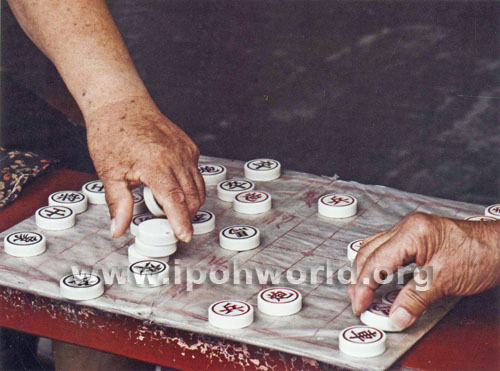Xiangqi is played on a board nine lines wide and ten lines long. As in the game ‘Go’, the pieces are placed on the intersections, which are known as points. The vertical lines are known as files, and the horizontal lines are known as ranks.
Centered at the first to third and eighth to tenth ranks of the board are two zones, each three points by three points, demarcated by two diagonal lines connecting opposite corners and intersecting at the center point. Each of these areas is known as gōng – a “palace” or “fortress”.
Dividing the two opposing sides, between the fifth and sixth ranks, is the “river”. The river is often marked with the phrases chǔ hé, meaning “Chu River”, and hàn jiè, meaning “Han border”, a reference to the Chu-Han War. Although the river provides a visual division between the two sides, only two pieces are affected by its presence: soldier pieces have an enhanced move after crossing the river, and elephant pieces cannot cross it. The starting points of the soldiers and cannons are usually, but not always, marked with small crosses. – extract from Wikipedia.
Here we have a picture showing a game of Xianqi or Chinese Chess in progress. Note the placement of the tokens.
For those of you who want to see a real Xianqi board, visit our exhibition at Han Chin Villa!

